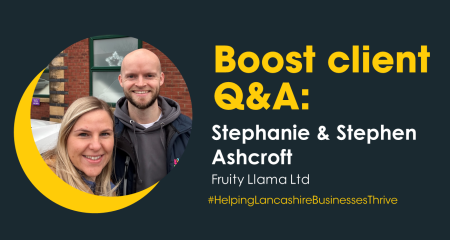
The SME Productivity & Innovation Centre (PIC) at Edge Hill University is an internationally recognised Centre of Excellence supporting SMEs to achieve growth through scale-up. The scale-up phase is typically the quickest and most significant stage of growth, based primarily on the most effective use, allocation and tracking of resources, and one that can bring the most challenges for an SME. However, unlocking your organisation’s scale-up potential will hold significant profitable rewards such as enabling you to measure your company’s competitiveness in the marketplace and improve your organisation’s ability to avoid waste and rework. The six articles in this series will share the experiences of PIC’s scale-up experts in addressing the common six SME Dysfunctions which regularly inhibit effective scale-up: Undefined demand, Undifferentiated offer, Ineffective communication, Unclear processes, Undefined organisational structure, and Ineffective use of data.
It is not uncommon for SMEs to experience some dysfunctions in their business. SME directors are often so busy working in the business as it grows, it’s hard to spot these dysfunctions developing and manifesting themselves. At the SME PIC, we can often identify these dysfunctions in our earliest discussions with a business and then take you on a journey to find the underlying cause and work on a solution plan. The impact of a dysfunction will affect your profitability, productivity, efficiency and demand so it is essential to address these issues as early as possible. The ineffective use of data is a common dysfunction we see in SMEs. Many businesses do not appreciate the volume and value of the data they already have in the business. If you have a customer invoice, you already have 80% of the most important and valuable data you will need. Data can be found in your Customer Relationship Management system (CRM), internal workflows, and sales ledgers. However, it isn’t just about having the data – it is about asking the right questions about it and making the data work harder for you. For example:
The existing data in your CRM system, internal workflows, and sales ledgers are all key data sources to determine valuable insights such as which sectors and locations are your best customers in. What are some common scenarios your customers are in when they first come on board, what is it you can help them with that your competitors cannot? Workflow data will provide insight into customer journeys and any single point of failure and sales ledgers will tell you what the average order values are and what margins you are achieving on individual products and services.
For a business to scale-up effectively, it must have a more productive use, allocation and tracking of their resources. It is this latter activity, tracking, that effective data use will help with. We are living in a digital age, yet many businesses continue to use paper systems and spreadsheets when there are many cost-effective systems that will present your data in an easily digestible way. For example, a good CRM will help you manage and monitor your sales pipeline and sales team activities. After a couple of months of data, you will be able to identify activities that work (and what doesn’t).
You will know your enquiry conversion rates, which will inform how much work must be done at the top of the funnel to achieve the results you want. To those new to it, data analysis can seem daunting. We work with businesses in the Rapid Innovation Sprint Workshops to overcome this and help you develop your own data literacy skills. In basic terms, it is all about spotting patterns and common characteristics, which are easier to identify when taking a step back from the operations of your business and looking at the bigger picture in the right resolution. The SME Productivity & Innovation Centre has worked with over 190 SMEs in Lancashire and the Liverpool City Region since 2018 to address exactly the types of issues and inconsistencies described here, helping SMEs drive on average 29% growth. Until June 2023 places on the Rapid Innovation Sprint Programme are fully-funded via the European Regional Development Fund.
If you recognise these challenges in your business, then we would be pleased to discuss if we can help. See also in the series: Six Dysfunctions of SMEs: Undifferentiated Offer | Six Dysfunctions of SMEs: Undefined Demand | Six Dysfunctions of SMEs: Ineffective Communication | Six Dysfunctions of SMEs: Undefined Organisational Structure | Six Dysfunctions of SMEs: Unstructured Processes  Author: Kate Currie, SME Growth Expert, Edge Hill University SME Productivity & Innovation Centre The SME Productivity & Innovation Centre has worked with over 200 SMEs in Lancashire and the Liverpool City Region since 2018 to address exactly the types of issues and inconsistencies described here, helping SMEs drive on average 29% growth. Until June 2023 places on the Rapid Innovation Sprint Programme are fully funded via the European Regional Development Fund. If you recognise these challenges in your business, then we would be pleased to discuss if we can help.
Author: Kate Currie, SME Growth Expert, Edge Hill University SME Productivity & Innovation Centre The SME Productivity & Innovation Centre has worked with over 200 SMEs in Lancashire and the Liverpool City Region since 2018 to address exactly the types of issues and inconsistencies described here, helping SMEs drive on average 29% growth. Until June 2023 places on the Rapid Innovation Sprint Programme are fully funded via the European Regional Development Fund. If you recognise these challenges in your business, then we would be pleased to discuss if we can help.
Boost is helping Lancashire businesses. We have a range of funded support programmes and a team of business advisers you can talk to. To speak to someone from the Growth Hub about business support, contact Boost online or call 0800 488 0057.




The website uses cookies.
Some are used for statistical purposes and others are set up by third party services. By clicking 'Accept all & close', you accept the use of cookies. For more information on how we use and manage cookies, please read our Cookie Policy.